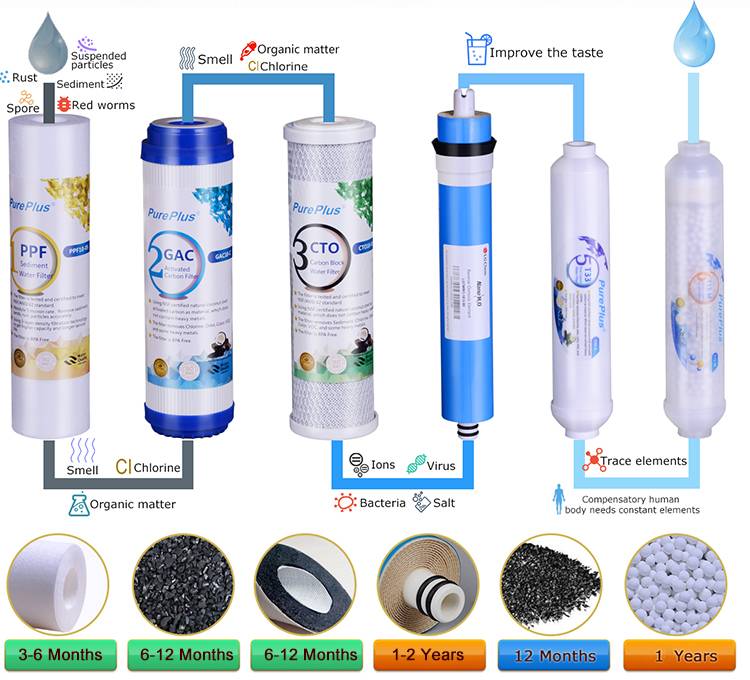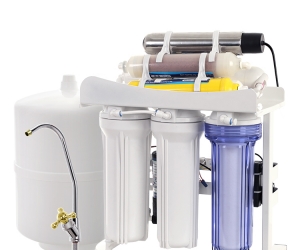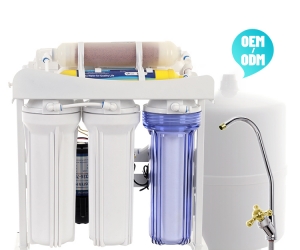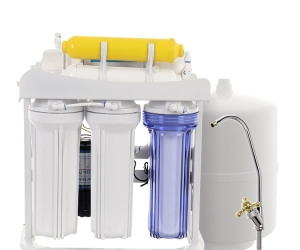A Reverse Osmosis Water System can sole 90% of family water issues like chlorine taste, bad smell and polluted drinking water. It is becoming more and more popular while users should know how reverse osmosis water system work clearly to reach an excellent filtration performance.

What Does A Reverse Osmosis Water System Include?
Standard reverse osmosis water systems usually include 5 separate filter cartridges with different filtration functions. From the first one to the last one respectively are 5 micron PP sediment filter, GAC granular carbon filter, CTO carbon block filter, RO membrane filter and Post inline carbon filter. The first 4 filters in a reverse osmosis water system effectively intercept and filter large impurities, chlorine, taste / odor, bacteria and virus all together. The last carbon filter is used to improve water taste after Reverse Osmosis membrane filtration.
-
Pre Filtration of A Reverse Osmosis Water System
PP, GAC and CTO water filter work together to complete the pre filtration process of reverse osmosis water system. When water flows into the three filters, it contacts with inner polypropylene and activated carbon closely and tightly. Then, most of the impurities and contaminants will be blocked and intercepted by fibers and pores on the surface of polypropylene and activated carbon. During this whole process, the unfiltered water flows into a reverse osmosis water system one by one with the help of differential pressure. Firstly, water comes out of your tap and then flows into the reverse osmosis water system. Some reverse osmosis water systems are quipped with a pump to control the pressure and gain an excellent water flow rate.
-
0.0001 Micron Filtration: Reverse Osmosis Membrane
Reverse osmosis membrane is a kind of semi-penetrable membrane that allows only pure water molecules come through. RO membrane filtration is the most essential step during the whole reverse osmosis water system filtration. The water comes out of CTO carbon water filter still contain some tiny impurities, bacteria & virus, inorganic salt & heavy metals which will cleared by reverse osmosis membrane completely. Besides that, RO membrane also decides the filtration life, water flow rate of a reverse osmosis water system. Popular RO membranes on the market: 100 GPD, 200 GPD, 400 GPD and 600 GPD.
-
Why Post Inline Carbon Water Filter?
Although reverse osmosis water system helps generate filtered clean drinking water, the water tastes a little weird like distilled water. So, most reverse osmosis water system manufacturers design the inline carbon water filter installed after RO membrane in a reverse osmosis water system. This kind of filter cartridge helps improve water taste, add some beneficial matters in filtered water.
A complete working process of reverse osmosis water system is finished after the above 3 phases. The main work principle of a reverse osmosis water system is pressure. Under certain pressure, pure water flows into the core filter cartridge, reverse osmosis membrane, and left all those impurities of inorganic salt, heavy metal and some other ions. Pure water will outflow from tap and waste water will be discharged through waste water pipe.





